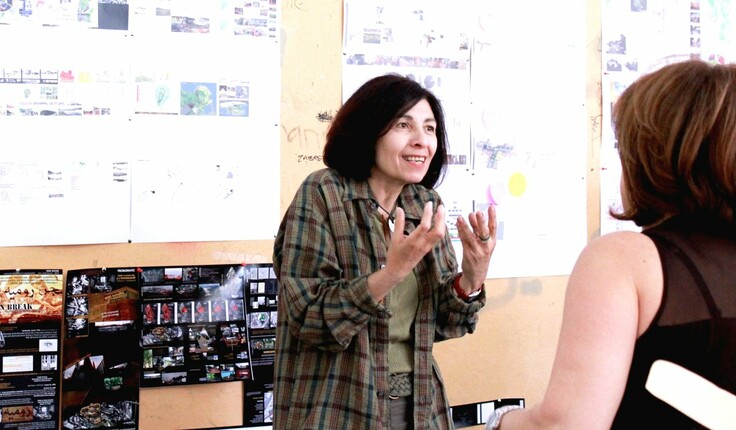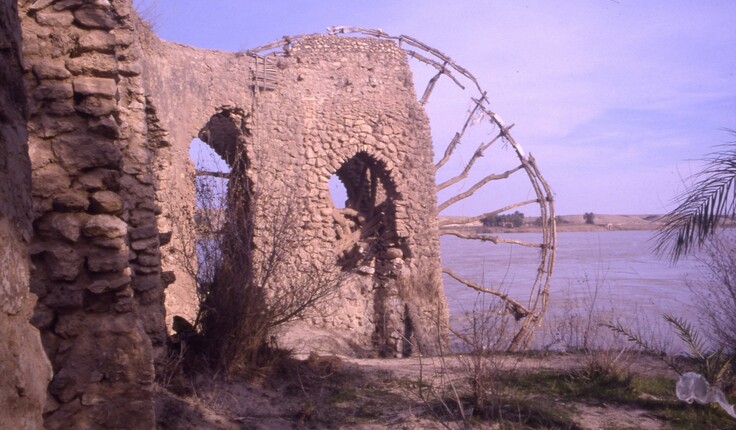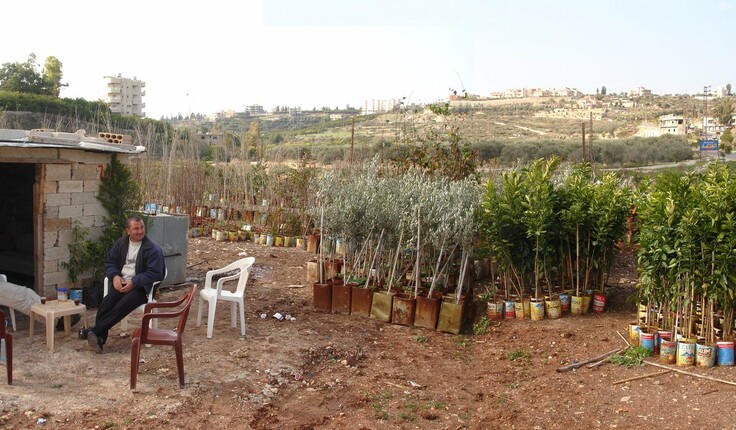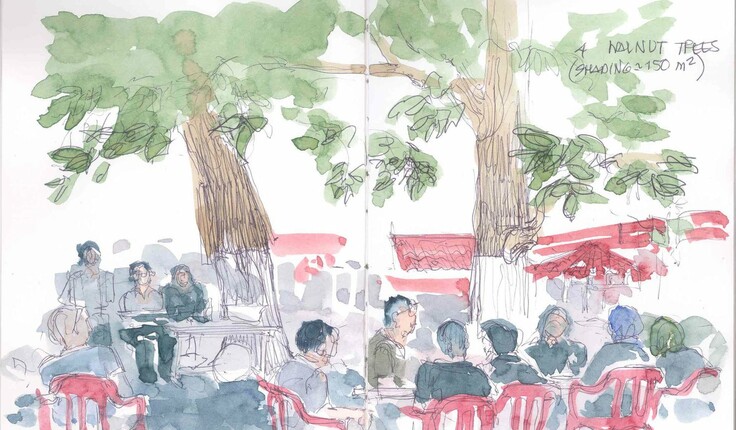News
NZILA Firth Conference 2023: Speaker Dr Jala Makhzoumi
Posted 07 03 2023
in News

Renowned landscape architect Dr. Jala Makhzoumi will be an in-person keynote presenter at the 2023 NZILA Firth Conference in Nelson in May.
Dr Makhzoumi’s work spans multiple continents and countries, including Iraq, Lebanon, and the United Kingdom. With a background in architecture from the University of Baghdad, she went on to pursue her Master’s in Environmental Design at Yale University and received her PhD in Landscape Architecture from Sheffield University. Throughout her academic and professional career, she has been a strong advocate for place and culture-responsive, ecologically sensitive, and community-driven solutions to landscape design and planning.
Dr. Makhzoumi’s expertise lies in ecological landscape design and planning, where she uses a holistic and developmental approach to balance community needs with ecosystem health, biodiversity protection, and landscape heritage conservation. Her work in this area is particularly relevant in post-conflict recovery and sustainable urban greening, where she combines her knowledge of architecture and landscape architecture to create sustainable and livable environments.
In recognition of her contributions to the field, Dr. Makhzoumi has received several prestigious awards, including the Tamayouz Award for Women in Architecture and Construction in 2013, the European Council of Landscape Architecture Schools Lifetime Achievement Award in 2019, and the IFLA Sir Geoffrey Jellicoe Award in 2021. She has also authored and co-authored several books and articles, including Ecological Landscape Design and Planning: The Mediterranean Context and The Right to Landscape: Contesting Landscape and Human Rights.
As an adjunct professor of landscape architecture at the American University of Beirut and the acting president of the Middle East Chapter of the International Federation of Landscape Architects, Dr. Makhzoumi continues to push the boundaries of landscape architecture and advocate for sustainable and community-driven solutions.
You can find more details about the conference here, and read on for a LAA Q & A with Dr Makhzoumi.
LAA: It’s a big question, but how would you describe your approach to landscape architecture?
JM: Apart from the pleasure of beholding a landscape for the first time, whether an urban plaza or village woodland, it is curiosity as to how the landscape was shaped? By whom and for what reasons, that I find intriguing. Uncovering layers of the landscape palimpsest, the natural and cultural, understanding local perceptions and valuation is the essence of the holistic, expansive methodology of ecological design that I have applied in many projects. The process is open-ended and humbling, a journey of discovery and learning. The understanding gained helps me frame the problematic and inspires landscape design – here I mean design in its broadest sense, a plan for sustainable and meaningful future.
LAA: What projects or professional experiences have shaped your career so far and its intersection between landscape, human rights and democracy?
JM: Each project presents new challenges, a chance to test methods and approaches, to widen the professional scope. Witnessing the upper Euphrates Valley for the first time was one such experience. Driving for miles in a bare, arid landscape, is rewarded with a glimpse of the fertile river valley, a crack in the desert plateau. The valley is a verdant corridor cultivated with date palm groves, laced with a complex irrigation system which transports water from large waterwheels. As with the landscape, the settlement morphology and building form, shaped over three millennia, to make efficient use of the landform, geology and soil and the climate. The landscape was my first lesson in ecological design. I spent the following two decades searching for tools and methods that are inspired by local ecologies, that can inspire and guide design students, architects and landscape architects.
Can landscape architects play a role in postwar recovery was another important point in my career. I asked the question following Israeli bombardment of villages and rural landscapes in southern Lebanon in 2006. To find the answer, I set the program for third year landscape design studio in one of the ruined villages. The scale of devastation and suffering was overwhelming for students and teachers alike. Using our skills and knowledge to repair the landscape and heal was cathartic. Not only did the project expand the perception of the profession, that landscape architecture was not about gardening, but it made us realize that restoring local community pride in their heritage and rebuilding their confidence in the future, in short, ‘recovery’, was just as important as rebuilding destroyed homes, ‘reconstruction’. In the former, the focus is on people and a process of healing, intangible values undermined by the event.
LAA: You’ve spoken and written about landscapes which support human existence and landscapes that support human dignity. Can you elaborate on those ideas?
JM: The overlap between human existence and human dignity is clear in the postwar recovery project (discussed above). In the countryside, ‘existence’ is tied with livelihoods, namely by cultivating the land and herding. Livelihoods are the source of sustenance, how individuals can provide for their families. There is pride and dignity in this. When livelihoods are lost, either because of natural disaster, war or unjust expropriation of property, individuals can no longer provide for their loved ones, they lose face, they lose their dignity.
In urban settings, dignity similarly draws on quality existence – physical, psychological, social, economic and political. Cities the world over are places of extreme social and economic inequalities. In the Middle East, market-led, corporate development collude with state authorities to aggravate these inequalities. Prime lands, nature pockets, woodlands, the waterfront, are privatised, converted into gated, high-end development depriving the public from accessing the sea or experiencing nature. This is one way of diminishing the quality of life for the majority that robs them of their rights and their dignity.
As landscape architects we must find ways to address the imbalance of power, to ‘reclaim’ and sometimes ‘invent’ landscapes that serve the marginalised majority, to give a voice to those robbed of their rights. Attachment to the landscape is empowering to the marginalised just as they serve as an arena for the manifestation of power for the state and market forces.


LAA: You’ve been very clear that research, practice and teaching are all equally important to you – how do you navigate that?
JM: In a region where landscape architecture is an emerging profession, holding on to teaching, research and practice was an absolute necessity; the only way to progress the profession. And while teaching is a vocation, a way to nurture and inspire young professionals, practice is my way of learning, of fulfilling my creativity as a designer. Research is a way to reflect on teaching and professional practice, publishing enables a sharing the experiences, to communicate to a wider audience the inner workings of a landscape approach.
Holding on to all three was equally necessary in the global south, specifically in the politically volatile Middle East. Not only are resources to protect the environment and conserve nature limited, but the priority is for economic development and social betterment. Landscape architecture is one of the few professions that has the potential to address concerns for human and environmental well-being, to mediate community needs and sustainable use/management of natural resources.
LAA: You have also spoken about the concept of living heritages which is especially relevant here in New Zealand with the increasing commitment by the landscape architecture profession to work with and take guidance from Māori - have you had a chance to look at that at all?
JM: Though often associated with the past, ‘heritage’ is increasingly viewed as an ongoing process that draws on the changing relationship between identity, who we are as a community or a nation, the memories we hold and ownership of the places we inhabit. ‘Living heritage’ is when the three, identity, memory and ownership interact in mutually supportive ways. Vernacular landscapes are a ‘living landscape heritage’ because they define the identities, hold the memories, and shape the values of the people that inhabit them over generations. And while the physical setting, is tangible heritage, a landscape in-tune with nature and responsive to the local ecology, local cosmologies that speak of those that shaped the landscape, why and how they did so, is intangible heritage. The two are complementary, mutually supportive, and as such inspiring to landscape architecture.
In the Middle East, post-colonial national identities perpetuated the Orientalist, colonial discourse which undermined everyday, vernacular culture, equally in cities and the countryside. Architects and landscape architects are slowly becoming aware of the cultural and ecological rupture and the lessons that can be learned from vernacular culture. The process is long and ongoing.
The situation is not different in NZ, recognising the value of the living landscape heritage, before land and people were colonised, means that we can learn from it, be inspired by it and celebrate it. I once asked a dear colleague, Diane Menzies, to share with me the experience of protecting steams and rivers in NZ that were community-led. She told me of the Whanganui River, that was central to the existence of Whanganui Iwi, health and wellbeing. I came to learn of the persistent efforts to protect and provide for that special relationship with the river, the Whanganui River Deed of Settlement signed in 2014. The deed formally accorded the river the status of legal personhood as Te Awa Tupua, an indivisible and living whole incorporating its tributaries and all its physical and metaphysical elements from the mountains to the sea.
What an inspiration for landscape architects the world over.
What better example to demonstrate the reclaiming of living landscape heritage?
LAA: What, for you, are the biggest challenges facing the profession right now?
JM: The biggest challenge, therefore, is to find ways to change the perception of landscape architecture among other professionals, especially engineers and architects, but also local authorities and the public at large.
When I started teaching landscape architecture at the American University of Beirut, my students often spoke to me of their frustration. When they explained that they were studying landscape, invariably the response was, ‘so you design gardens’? This is understandable considering that the definition and scope of landscape architecture has changed fundamentally over the last decades. For the greater part of the 20th century, the scope of landscape architecture was limited to beautification, the design of parks and gardens. Today landscape architects have moved from product delivery, ‘a landscape design’, to focus on processes that support local communities and indigenous cultures, upholding their rights, communicating their concerns and mediating with funding agencies to improve their future. Winners of NZILA Awards reflect the wide scope and range, in scale, of projects undertaken by landscape architects in your country.
LAA: You are presenting at the NZILA First Conference in NZ in May - what can delegates expect from your presentation?
JM: The theme for NZILA conference 2023, ‘Growing Pains’, calls for innovative approaches to address the growth of provincial towns. From my experience, the landscape of provincial towns continues to capture the lived in, mutually constitutive relationship of people and environment. The urban morphology and features are anchored in, and incorporate, the natural setting and associated socio-cultural practices. Together these contribute to the distinctiveness and attractiveness of these towns. The threat comes from unregulated urban growth and development that fail to recognise the environmental, ecological and cultural value of the urban landscape. By addressing equally, the health of people and the environment, landscape architects are more likely to capitalise on the urban heritage of provincial towns, their distinctiveness, and as a platform to safeguard environmental health and provide for continued quality living. In my talk I draw on the Erbil greenbelt, Iraq, and another project in Saida urban sustainable development strategy, Lebanon, to demonstrate the landscape approach and its contribution to enduring and meaningful futures.
Share

14 Apr
NZILA Board nominations close tonight

Read the insights from current Board members
What does the current Board have to say about this opportunity? REMINDER: Board Nominations close tonight, 14 April, 11.59pm We …
08 Apr
Update from Environmental Legislation Working Group
RMA Reforms and NZILA Wānanga
Our understanding of Spatial Planning and in creating well-functioning environments is more deeply considered than simply green fluff - the …
02 Apr
Follow up from the virtual IFLA World Council (22 and 23 March)

Did you attend the virtual IFLA World Council held last weekend? Presentations and ReportsThese can be found here. RecordingFor those …
Events calendar
Full 2025 calendar